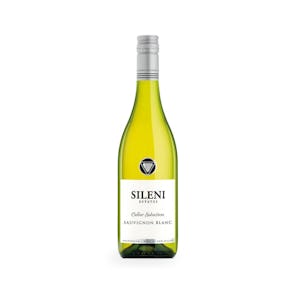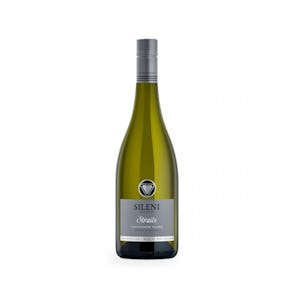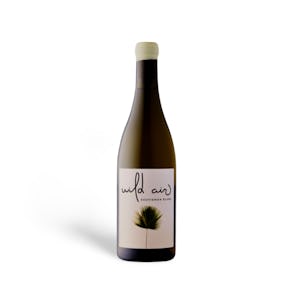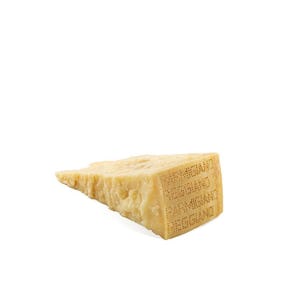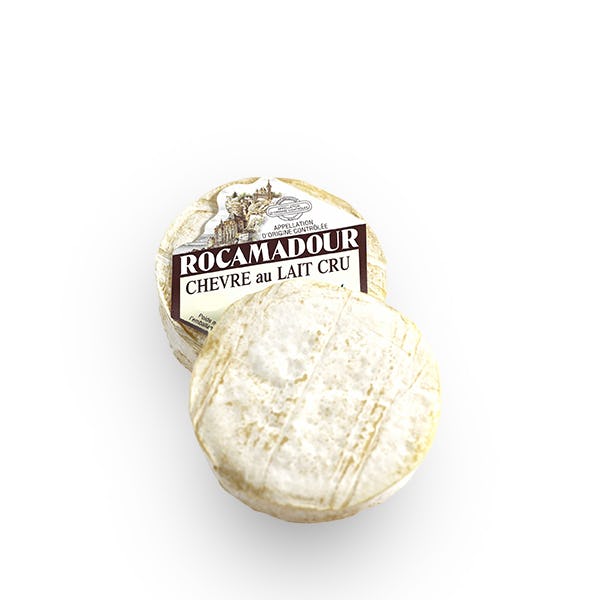
Rocamadour AOC
A celebrated cheese
TASTING NOTES FROM THE CURATOR
Sometimes called Cabécou de Rocamadour or Cabécou de Gramat, it is made from raw goat’s milk, and belongs to a family of goat cheeses called Cabécous. Rocamadour cheese comes in a small flat round shape with a natural edible rind, its interior tender and silky. It takes about 12-15 days to mature, is combined with very little rennet, and gives off flavors of milk and hazelnut while young, getting stronger and nuttier the further it is aged. The richness of the goat’s milk owes itself to goats having access to abundant pasture (no more than 10 goats per hectare) in the Rocamadour area.
Due to their small size, Rocamadour matures rapidly. They can be happily eaten at about 2 weeks of age, when the rind is thin and the interior paste is tender, supple and yielding with flavors of milk and hazelnuts. At four weeks or more, the cheeses become firm and the pale rind develops spots of blue mold. Flavors become stronger and more assertively goaty with notes of caramel.
The cheeses develop a stronger, nuttier flavour whilst becoming drier.
PAIRINGS AND PREPARATION
Rocamadour is a soft cheese that can stand on its own, needing very little dressing. But should a craving to pair it arises, it’s delicious drizzled with a little honey. While young, its buttery, nutty flavor makes it a perfect addition to salads, or on top of hot crusty bread. Complement this pairing with a nice dry white wine. Cook it with mashed potato, and serve alongside soft lamb shank. Delicious! Aged for longer, and it becomes an excellent ending to a meal. Eat on its own, paired with a full-bodied red wine.
ALL HAIL, CHEESE!
The village of Rocamadour sits on a mountain cliffside, with medieval architecture seemingly untouched by time. But every year, around Pentecost Sunday, the village holds its Fête des Fromages, the largest cheese festival in the south of France. It enjoys participation by 40 cheese producers in the area, and attended by around 10,000 visitors. It begins with the Fruits de la Terre Mass, and a blessing of goat and sheep herds. Live music and entertainment keep the spirits up, and accompany the visitors in the farmers markets where wine and cheese tasting (and buying!) are held.
Storage Instructions
Cheeses (except brined ones in jars) should be stored in the crisper or the butter drawer of a refrigerator, not on the shelves themselves. This is to help regulate their temperature and humidity levels—and prevents the formation of mold. Once opened, they should not be kept in their original packaging. Soft cheeses with delicate rinds need to breathe, so they are best placed in glass containers lined with paper towels to absorb extra moisture. Leave the lid open a tiny bit for air to circulate and don’t forget to write up a label with the date you first opened the package.
Air-flown cheeses are brought in as per demand. Fresh cheeses do not have a long shelf life as they contain less to no preservatives at all. Shall you find faint spots of blue mold in your Rocamadour, this is normal as the cheese has now become more mature and at its best peak stage for consumption. What you will get are strong goaty flavors with notes of caramel. It is recommended that they be consumed within 1 week upon arrival at your residence.

